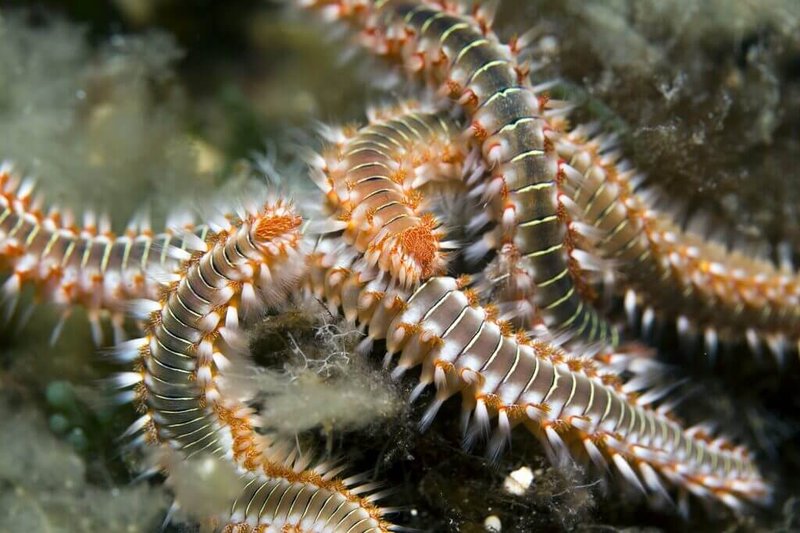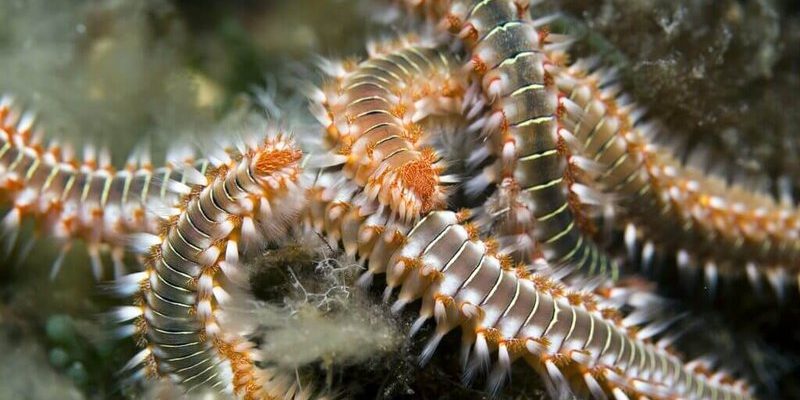
Bristle worms, also known as polychaetes, are a diverse group of marine worms found in many aquatic environments. While they play a crucial role in the ecosystem, their interactions with humans can raise eyebrows—or even cause concern. In this article, we’ll unpack what bristle worms are, whether they pose any threats to us, and how to safely navigate encounters with these intriguing creatures.
What Are Bristle Worms?
Bristle worms belong to the class Polychaeta, which contains around 10,000 species. That’s a lot of worms! They come in various sizes, colors, and shapes, often sporting bristle-like structures along their bodies. You might picture them looking like little spaghetti noodles, but with more flair! Some even have bright colors that are eye-catching in the ocean.
You might be wondering where these creatures hang out. Bristle worms can be found in marine environments all around the globe. They’re often spotted in sandy or muddy substrates, hiding in crevices or burrowing into the ocean floor. Their habitats range from shallow tidal pools to the deep sea. So, whether you’re a beachcomber or an ocean explorer, you might run into them.
These worms play an important part in the ecosystem. They help break down organic material and recycle nutrients, making them essential for a healthy ocean environment. So, while they may not win any beauty contests, they’re definitely key players in their underwater world.
Are Bristle Worms Dangerous to Humans?
Now, let’s get to the heart of the matter: Are bristle worms harmful to humans? The short answer is: not really. While they have some unique features, most bristle worms aren’t a direct threat to us. However, things can get a bit tricky with certain species.
Some bristle worms possess **stinging bristles** called setae, which can cause irritation if they come into contact with skin. Think of it like a mild sting or a rash, similar to a nettle. If you accidentally touch one, it might feel like a tiny, prickly sensation. But don’t panic; these effects usually go away quickly, and most people recover without any problems.
That said, avoiding contact is probably a good idea. If you’re exploring tide pools or the beach, it’s best to gently admire bristle worms from a distance. This way, you can enjoy their intriguing beauty without risking a sting!
Common Species of Bristle Worms
There are numerous species of bristle worms, but not all of them have the same level of interaction with humans. Here are a few notable ones:
- Fire Worms (e.g., Hermodice carunculata): These are famous for their intense irritation when touched. Their bright colors are beautiful, but don’t let that fool you!
- Sea Mice (e.g., Aphrodita aculeata): Known for their furry appearance, these worms are more curious than harmful. They’re mostly scavengers and do not pose a threat to humans.
- Sand Worms (e.g., Alitta virens): Often used as bait, these worms are harmless to us and can be found in sandy regions.
Knowing which species you’re dealing with can help you gauge the level of caution needed when encountering them. Generally, it’s the **fire worms** that require the most attention due to their potential sting.
How to Handle Bristle Worm Encounters
If you find yourself surprised by a bristle worm while enjoying a day at the beach, here are some tips on how to handle the encounter safely:
1. **Observe from a Distance**: Use your phone or binoculars to get a closer look without touching. This way, you can enjoy their fascinating features without any risk.
2. **Don’t Touch**: If you’re unsure about the species, it’s best to avoid touching. Some bristle worms can cause irritation, and it’s always better to be safe than sorry.
3. **Wash If You Touch**: If you happen to accidentally touch a bristle worm, wash the affected area with soap and water. This will help remove any bristles that might cause irritation.
4. **Consult Local Guides**: If you’re in a coastal area known for bristle worms, try chatting with local marine biologists or guides. They can provide insight into what you might encounter and how to navigate the area safely.
Bristle Worms in Aquariums and Marine Life
Interestingly, bristle worms are often found in saltwater aquariums. They’re not just a nuisance; in fact, they can contribute positively to the tank environment by helping break down waste. However, it’s essential to monitor their population, as overpopulation can lead to issues in a closed ecosystem.
If you’re new to keeping an aquarium, here’s what you need to know:
– **Balance is Key**: A few bristle worms can be beneficial, but too many can lead to overcrowding and competition for resources.
– **Regular Maintenance**: Keep an eye on your water quality and do regular tank maintenance to prevent an explosion of bristle worm numbers.
– **Research**: Make sure to identify the species in your aquarium. Some might not be ideal for close quarters with other tank inhabitants.
Bristle worms can be both fascinating and useful in the world of marine life, but just like with any aspect of nature, a little caution goes a long way.
Bristle worms are just one of the many wonders of the ocean. While they might not be the most glamorous sea creatures, they play a vital role in marine ecosystems and can teach us a lot about the delicate balance of nature. They’re not typically harmful to humans, but it’s always wise to be cautious and informed.
Next time you find yourself at a beach or exploring tide pools, appreciate the beauty of these unique creatures from a respectful distance. Whether you’re a curious marine enthusiast or just enjoying a sunny day by the sea, understanding bristle worms can enhance your experience and empower you to appreciate the ocean’s complexity even more. So, let’s celebrate our underwater companions, knowing that while they might sting if touched, they’re mostly harmless and utterly intriguing!

